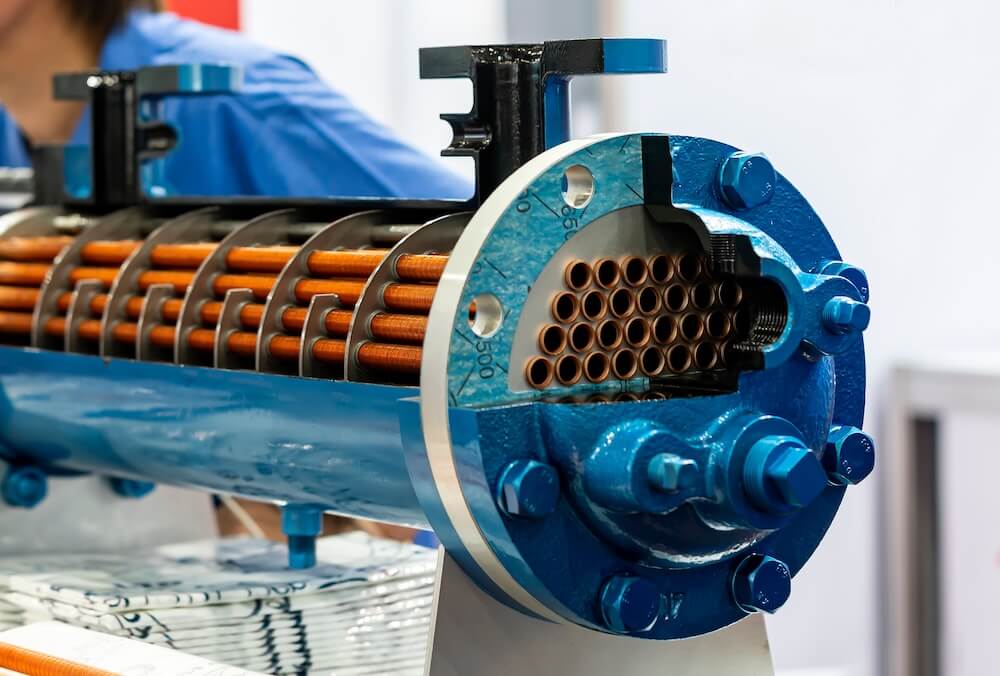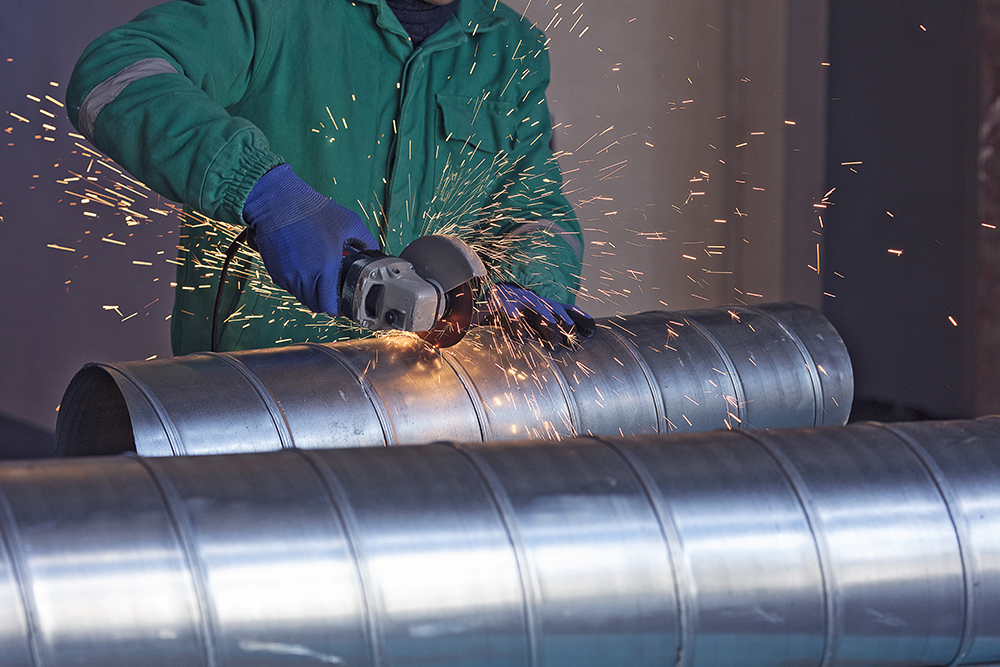Shell and tube heat exchangers are widely used for efficient heat transfer in industries like chemical processing, HVAC, and power generation. When optimized effectively, these systems can maximize energy efficiency while minimizing entropy production, which is critical for reducing waste and improving overall system performance. This guide provides strategies for optimizing a shell and tube heat exchanger with fins and baffles, focusing on achieving minimum entropy production.
“To optimize a shell and tube heat exchanger with fins and baffles for minimum entropy production, focus on factors like flow velocity, baffle design, fin placement, and temperature difference management to reduce irreversibilities in heat transfer and fluid flow.” This approach helps in achieving higher efficiency and sustainability in heat exchange applications.
Understanding Entropy Production in Heat Exchangers
Entropy production in a heat exchanger is primarily due to irreversibilities in heat transfer and fluid flow. When entropy production is high, it indicates greater energy losses within the system. Minimizing entropy production is essential for improving the thermodynamic efficiency of the heat exchanger, reducing waste, and lowering operational costs.
In shell and tube heat exchangers, entropy production is influenced by temperature differences, flow arrangements, pressure drops, and the design of fins and baffles. Each of these factors can be adjusted to reduce energy losses, making the exchanger more efficient.
Key Optimization Factors for Reducing Entropy Production
When optimizing a shell and tube heat exchanger, several factors can help achieve minimum entropy production. Below, we discuss these factors and how they contribute to a more efficient system.
1. Optimize Flow Velocity
Flow velocity directly affects heat transfer and pressure drops within a heat exchanger. Higher flow velocities can improve heat transfer rates but may lead to increased pressure drops, which in turn increase entropy production. The goal is to find a balanced flow velocity that maximizes heat transfer efficiency while minimizing frictional losses.
- Calculate Optimal Velocity: Use computational fluid dynamics (CFD) simulations or engineering calculations to determine the ideal flow velocity based on the system’s design and operating conditions.
- Adjust Pump Power: To maintain optimal velocity, adjust the pump power to avoid excessive flow rates that lead to pressure drops and entropy production.
2. Design Efficient Baffle Arrangements
Baffles are used to direct the flow of fluid on the shell side, increasing turbulence and improving heat transfer. However, baffle placement and design can impact pressure drop and entropy production.
- Choose the Right Baffle Spacing: Baffles that are too closely spaced can cause high pressure drops, while widely spaced baffles may reduce heat transfer efficiency. Optimal baffle spacing, usually around 20-40% of the shell diameter, balances heat transfer and pressure drop.
- Use Segmental Baffles: Segmental baffles create a crossflow pattern, which enhances turbulence and heat transfer. However, adjust the baffle cut (percentage of the shell diameter) to reduce frictional losses while maintaining effective flow distribution.
3. Integrate Fins to Enhance Surface Area
Fins attached to the tubes increase surface area, which helps improve heat transfer efficiency by enhancing the rate of heat exchange. However, excessive finning or improper fin placement can lead to higher pressure drops, increasing entropy production.
- Use Optimized Fin Geometry: Choose fin shapes and configurations that maximize surface area without causing significant pressure losses. Fins with optimal height and spacing can balance heat transfer enhancement with pressure drop management.
- Focus on Fin Density: Too many fins can impede fluid flow and cause pressure drop issues. Moderate fin density that improves heat transfer without compromising fluid movement is ideal.
Managing Temperature Differences to Minimize Entropy
Temperature difference between the hot and cold fluids in the heat exchanger is a key contributor to entropy production. A larger temperature difference can drive heat transfer, but if it’s too high, it may cause thermal stresses and increase irreversibility. Proper temperature management techniques help achieve efficient heat exchange with minimized entropy.
1. Counterflow Arrangements
In a counterflow arrangement, the hot and cold fluids flow in opposite directions, maximizing the temperature gradient along the length of the exchanger. This configuration allows for a more uniform temperature profile, reducing thermal stresses and entropy production.
- Choose Counterflow Over Parallel Flow: Counterflow arrangements achieve higher temperature differences for longer sections, improving heat transfer efficiency and minimizing entropy production.
- Adjust Flow Rates: Matching the flow rates of both fluids helps balance temperature differences along the exchanger, reducing entropy caused by sudden thermal changes.
2. Use Multi-Pass Designs
A multi-pass design, where fluids pass through the exchanger more than once, can enhance heat transfer efficiency by maintaining a consistent temperature gradient. This method can also help control temperature changes in specific sections, reducing entropy production.
- Implement Tube-Side Multi-Pass Configuration: This configuration ensures uniform heat distribution across the exchanger, helping reduce irreversibilities associated with large temperature differentials.
- Control Fluid Flow Rates in Each Pass: Adjusting flow rates for each pass allows better control over temperature distribution, reducing entropy by avoiding steep thermal gradients.

Minimizing Pressure Drops to Control Entropy Production
Excessive pressure drop is a common cause of entropy production in shell and tube heat exchangers. To minimize pressure-related entropy, focus on strategies that reduce frictional losses without sacrificing heat transfer efficiency.
1. Optimize Shell-Side and Tube-Side Flow
Maintaining an optimal balance between shell-side and tube-side flow reduces frictional losses, which are responsible for increased entropy production. Using computational fluid dynamics (CFD) tools can help model flow patterns and identify optimal configurations.
- Adjust Tube Diameter and Layout: Smaller tube diameters increase surface area but can also lead to higher pressure drops. Optimizing tube size and layout can strike a balance between heat transfer and pressure efficiency.
- Optimize Tube Bundle Configuration: In a shell and tube design, tube bundle layout (like triangular or square pitch) can impact flow resistance. A triangular pitch allows tighter packing, enhancing heat transfer, while a square pitch reduces pressure drop.
2. Balance Baffle Cut and Spacing
Baffle cut, which determines the open area for fluid flow, impacts pressure drop. Baffles with too large a cut reduce the mixing effect, while smaller cuts can create excessive pressure drops.
- Use Staggered Baffle Cuts: Staggered baffle cuts allow better control of flow, reducing pressure drop without sacrificing turbulence.
- Consider Helical Baffles: For lower pressure drops, helical baffles direct fluid flow in a spiral motion, which promotes efficient heat transfer with minimal pressure losses, ultimately reducing entropy production.
Evaluating and Monitoring Entropy Reduction Strategies
To ensure that your shell and tube heat exchanger is optimized for minimum entropy production, regular evaluation and monitoring are crucial. Here are a few tips for keeping entropy production low over time:
- Monitor System Temperatures: Regularly monitor the inlet and outlet temperatures of both fluids. Any drastic changes could indicate imbalances in heat transfer or flow velocity that increase entropy.
- Track Pressure Drop Data: Pressure drop measurements on both the shell and tube sides reveal insights into potential frictional losses. If pressure drop is excessive, re-evaluate baffle spacing or fin density.
- Use Computational Modeling: Computational fluid dynamics (CFD) tools provide detailed modeling and simulation to analyze entropy generation hotspots and optimize design parameters further.
Optimizing a shell and tube heat exchanger with fins and baffles for minimum entropy production requires balancing heat transfer efficiency with pressure management. By carefully adjusting flow velocity, baffle spacing, fin density, and temperature distribution, you can achieve lower entropy, higher efficiency, and a more sustainable heat exchange process.
Summary: To optimize a shell and tube heat exchanger for minimum entropy, adjust factors such as flow velocity, baffle design, fin density, and temperature gradients. Balancing these variables reduces irreversibilities in heat transfer and fluid flow, resulting in higher efficiency and lower operational costs.
With a strategic approach to entropy reduction, you’ll enjoy a more efficient, cost-effective, and environmentally friendly heat exchange system that performs well over time.









